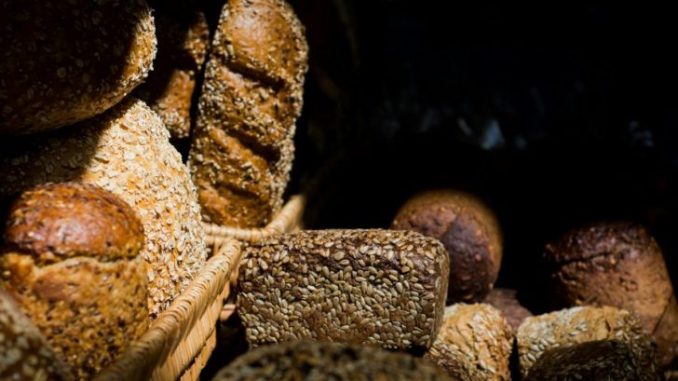
Bread is a staple in many diets, but for kidney patients, selecting the right type is essential for managing their health. Factors such as phosphorus, sodium, and fiber content must be considered when considering which bread is good for kidney patients. While whole grain and whole wheat options offer many benefits, it’s essential to understand how they affect kidney function.
Which Bread Is Good for Kidney Patients?
Whole-grain bread is often recommended for kidney patients due to its high fiber content, which aids in digestion and overall health. Although whole grains contain more phosphorus than white bread, much of this phosphorus isn’t absorbed by the body. This makes whole-grain bread a solid option for kidney patients who want the added fiber without significantly increasing their phosphorus intake.
James Harris | Unsplash | Whole-grain bread is often recommended for kidney patients due to its high fiber content.
The Importance of Checking Sodium Levels
Sodium is a critical factor for individuals with kidney disease, as too much can lead to fluid retention and high blood pressure. Bread, particularly processed varieties, can be surprisingly high in sodium. When selecting bread, it’s important to check labels and opt for low-sodium options to help manage sodium intake effectively. This small step can significantly contribute to better kidney health.
Whole Wheat Bread as a Healthy Choice
Whole wheat bread offers similar benefits to whole grain bread, especially in terms of fiber content. It provides the digestive benefits of fiber while offering lower phosphorus absorption. Whole wheat bread can be a balanced option for kidney patients, providing both nutritional benefits and a way to manage dietary phosphorus. However, as with all breads, sodium content should still be carefully monitored.
Multigrain Bread: A Nutrient-Rich Option
Multigrain bread containing grains like oats, barley, and flaxseed can offer a nutritious alternative for kidney patients. While it does contain phosphorus, similar to whole-grain bread, the body doesn’t absorb much of it. This type of bread provides a wide variety of nutrients, including fiber and essential vitamins, making it a valuable option for kidney health. As always, checking the sodium content remains key to making the best choice.
White Bread for Lower Phosphorus Intake
White bread has long been considered a safe choice for kidney patients due to its lower phosphorus content. While it lacks the fiber and nutrients of whole grain and whole wheat breads, it can be a good option for those who need to strictly limit phosphorus in their diet. However, it’s crucial to balance white bread’s lower phosphorus levels with its lack of nutritional value, choosing it only when necessary.
Elviss Railijs Bitāns | Pexels | White bread is a safe choice for kidney patients due to its lower phosphorus content.
Managing Phosphorus and Potassium
Balancing phosphorus and potassium is critical for kidney patients. Many bread types, especially those with added seeds or nuts, may contain higher levels of these minerals. While whole grains provide nutritional benefits, patients with strict phosphorus or potassium restrictions should consult their healthcare provider to determine the best options. Understanding how the body absorbs these minerals helps kidney patients make informed decisions about their bread choices.
Making Smart Bread Choices for Kidney Health
Choosing bread as a kidney patient goes beyond simple preferences. Whole grain, whole wheat, and multigrain bread can be good options, thanks to their fiber and nutritional benefits. However, sodium and phosphorus levels need to be considered to maintain proper kidney function. By reading labels and opting for lower-sodium, whole grain varieties, kidney patients can enjoy a balanced diet without compromising their health.
